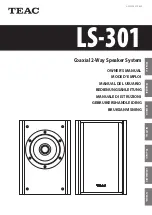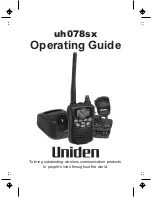
5
Remove the hatch on the front of the pedestal by loosening
the screw and lifting the hatch off of the hinges.
6
Apply the included Petrolatum Primer to one half of the
threads of the four threaded rods.
7
Insert the ends of the threaded rods coated in Petrolatum
Primer into the pedestal.
8
Tighten the threaded rods using a 5 mm hex wrench.
To avoid damaging the pedestal, you should stop tightening
the threaded rods when they no longer turn easily.
Mounting the Radar
Before you can mount the radar, you must first select a
mounting location, and prepare the mounting surface and the
radar (
Preparing the Surface and the Radar for Mounting
).
1
Take note of which end of the pedestal you plan to mount
facing the bow along the bow-stern axis.
If the hatch side is facing the bow, you must adjust the front-
of-boat offset on the chartplotter to receive an accurate radar
reading (
).
2
Hoist the radar into position, and carefully lower it onto the
mounting surface, feeding the threaded rods through the
holes.
3
From under the mounting surface, place the shoulder
washers
À
on the threaded rods and feed them into the
mounting surface so they fit securely.
4
Place the flat washers
Á
, lock washers
Â
, and hex nuts
Ã
on
the threaded rods.
5
Torque the hex nuts to 1.5 kgf-m (130 lbf-in. [11 lbf-ft.]) to
securely fasten the radar to the surface without damaging the
radar or the mounting hardware.
Installing the Antenna
Before you can install the antenna on the radar, you must
securely mount the pedestal (
).
1
Remove the protective cover from the waveguide on the top
of the pedestal.
2
Align the waveguide
À
on the pedestal with the socket on the
bottom of the antenna
Á
, and slide the antenna onto the
pedestal.
3
Secure the antenna to the pedestal using the included hex
bolts
Â
and spring washers
Ã
.
4
Torque the hex bolts to 0.81 kgf-m (70 lfb-in. [6 lbf-ft.]) to
fasten the antenna to the pedestal without damaging the
antenna or the mounting hardware.
Cable Considerations
It may be necessary to drill 32 mm (1
1
/
4
) in. holes for routing the
power or network cables.
• When routing both the power and network cables through the
same hole, you must route the network cable before the
power cable.
• You must apply marine sealant to the hole after the cables
are in place to ensure a waterproof seal.
2


























